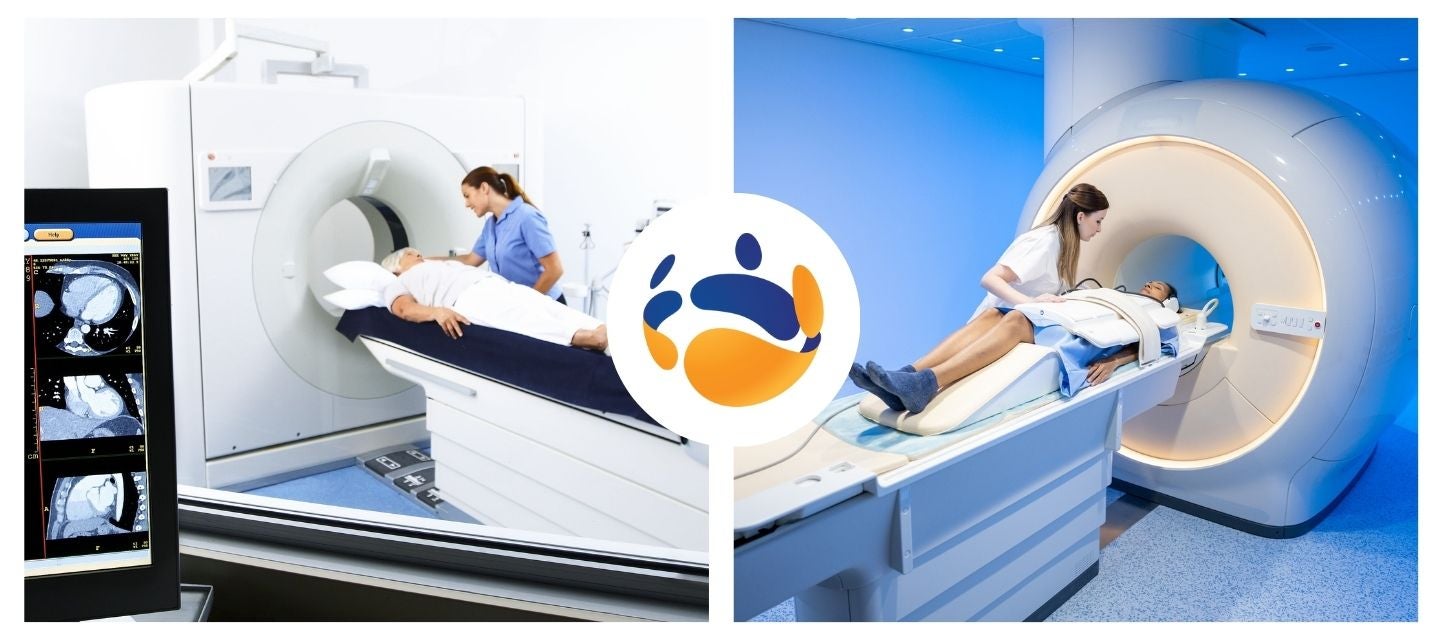
CT vs. MRI: Understanding the differences & benefits
CT vs. MRI: Understanding the differences & benefits

CT (Computed Tomography) and MRI (Magnetic Resonance Imaging) are radiology tests that allow doctors to visualise the body’s internal anatomy in cross section. Each plays a crucial role in diagnosing various medical conditions and providing essential information to guide patient treatment.
The decision between a CT scan and an MRI is based on the specific clinical question under investigation. Each test offers its own set of advantages and limitations, and the referring doctor carefully weighs the risk versus benefit for their patients in making the appropriate choice.
Below are the key differences between CT and MRI, including why a doctor might choose one over the other, and the benefits and limitations of each.
CT Scan
A CT scan utilises a series of x-ray images taken from different angles to create detailed cross-sectional images of the patient's body. It combines the power of x-rays with advanced computer technology, producing highly detailed images of bones, organs, blood vessels, and soft tissues.
Benefits of CT Imaging
Quick and efficient
CT scans are relatively fast, usually completed within minutes, making them ideal for emergencies or urgent situations.
Detailed images of bones and dense tissues
CT scans are excellent for visualising bone fractures, detecting tumors, and identifying conditions such as lung infections or kidney stones.
Enhanced contrast imaging
Sometimes, a contrast is injected into the veins to highlight specific areas, aiding in the diagnosis of blood vessel disorders, cancers, or infections. Contrast is especially useful in assessing abnormalities within the brain and solid organs of the chest (e.g. the heart) and abdomen (eg liver, pancreas and intestines).
Versatility
This test can evaluate a wide range of conditions, including head injuries, abdominal pain, lung diseases, and more.
Widely available
CT machines are commonly found in hospitals and imaging centers, ensuring accessibility for patients.
Limitations
- CT scans involve x-rays, which expose patients to ionising radiation. Although the radiation doses are considered safe, repeated CT scans over time may pose a small risk, especially in younger individuals.
- While rare, some people may experience allergic reactions or kidney problems related to the contrast dye used during CT scans.
- Additionally, soft tissue resolution in many areas (especially the brain and spinal cord) is not as good as MRI.
MRI (Magnetic Resonance Imaging)
MRI uses a powerful magnetic field and radio frequency waves to generate detailed images of the patient's body's internal structures. It provides exceptional clarity of soft tissues, including organs, muscles, nerves, bone marrow and the brain.
Benefits of MRI
Soft tissue visualisation and evaluation
MRI excels at capturing detailed images of soft tissues, making it ideal for assessing the brain, spinal cord, joints, and reproductive organs.
Multiplanar imaging
MRI scans can produce images in various planes, allowing physicians to view structures from different angles, providing comprehensive information.
Ionising Radiation-free
MRI does not utilise x-rays, eliminating concerns about radiation exposure, making it a safer option for pregnant women, children, and individuals who have already undergone significant radiation exposure.
Limitations of MRI
- MRI scans generally take longer to complete compared to CT scans, ranging from 15 minutes to over an hour, depending on the area being imaged.
- Certain metallic implants or devices, such as pacemakers or cochlear implants, may pose a risk in an MRI environment. It is essential for patients to inform their healthcare provider if they have any metal objects in their body.
- As MRI machines are more specialised, they may not be as widely available as CT scanners.
More information
Book your CT or MRI with confidence at I-MED Radiology, Australia's largest medical imaging provider. With an impressive fleet of 150 CT machines and 109 MRI machines, our extensive network of 230+ clinics ensures accessibility across the country.
Always discuss symptoms and concerns with your doctor who can determine the best imaging option/s for you.
Why you can trust I-MED Radiology
Our team of content writers create website materials that adhere to the principals set out in content guidelines, to ensure accuracy and fairness for our patients. Dr. Ronald Shnier, our Chief Medical Officer, personally oversees the fact-checking process, drawing from his extensive 30-year experience and specialised training in radiology.
